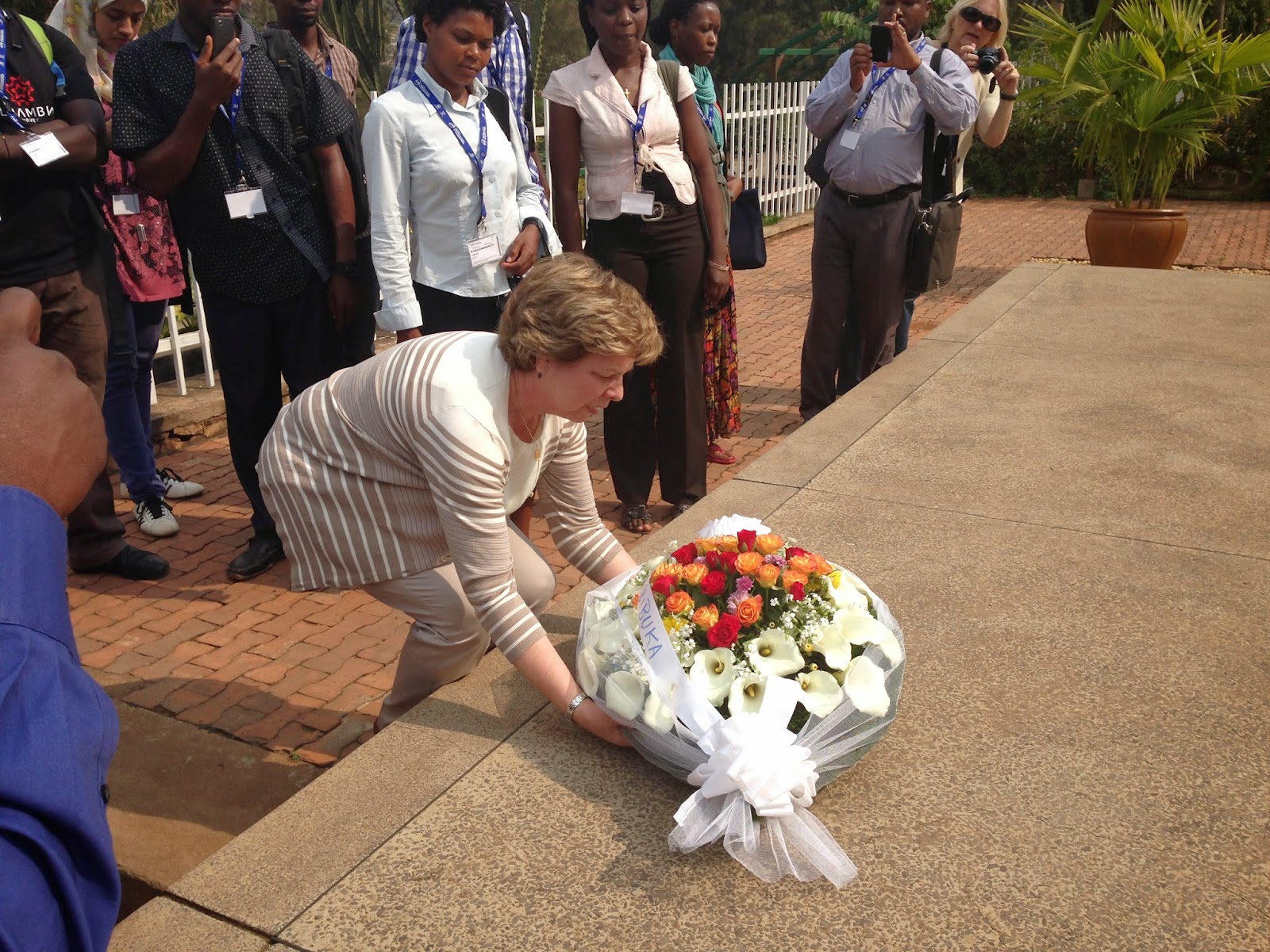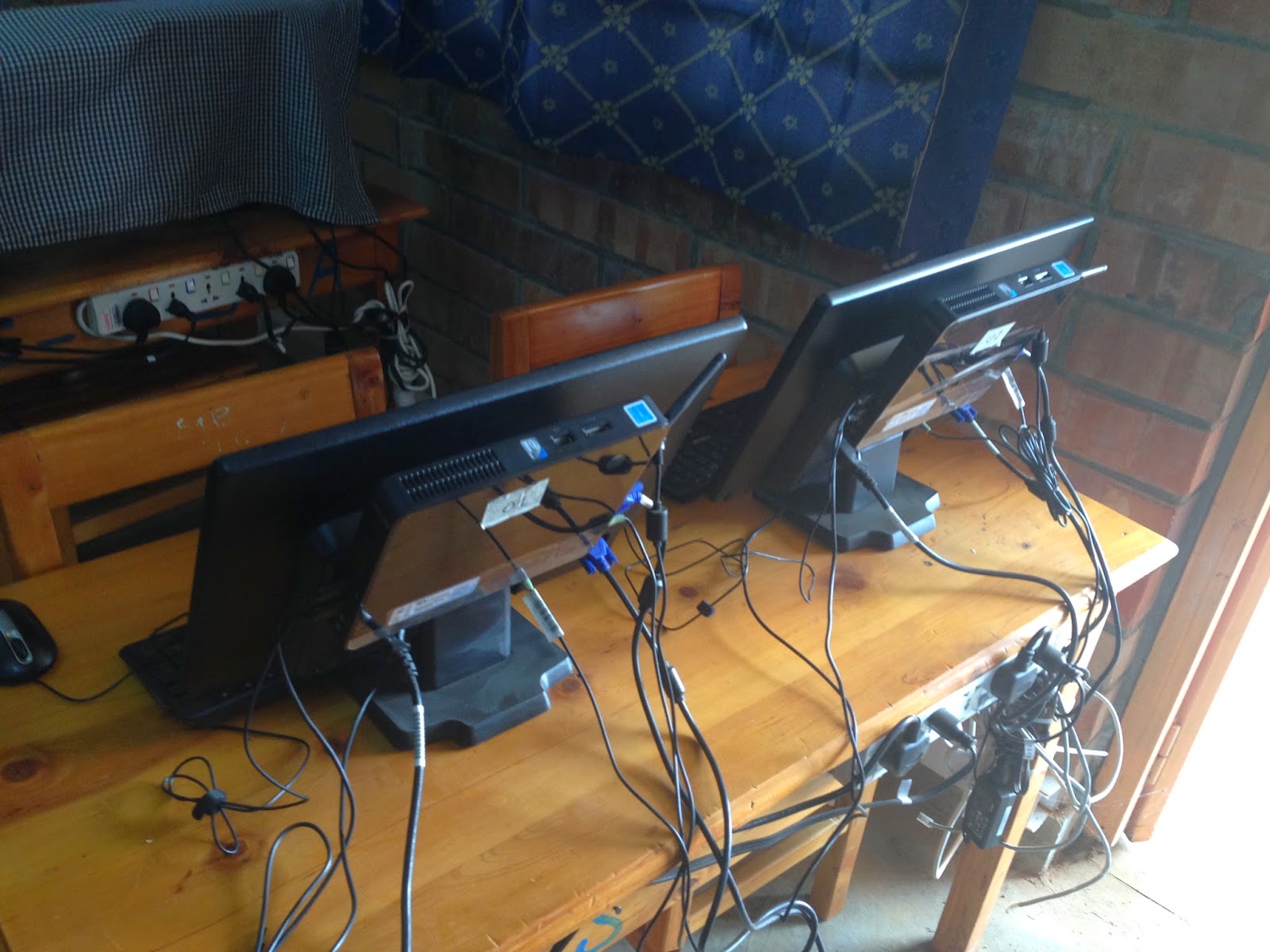Today we went to Maranyundo Girls Secondary School at Nyamata county. One of my colleague, Dr Anthea Coster, asked me if I can go with her to
visit this school that she has been supporting financially. Vivian, one of the
professor at Rwanda university, drove us to the Nyamata. It
is located at about 35 km away from Kigali.
When we arrived at the school we right away spotted a
picture of the Bostonian nun, who started this school, at the wall of the administration building. Here is how it started.
In 1995, just a year after the genocide, the governor of the Nyamata, who happened
to be a woman (unfortunately she passed away recently), went to Boston for a
conference and met this Bostonian nun and shared the story of her county,
which was actually the epicenter of the genocide. The same year the Bostonian nun
visited this county and saw all the remnant of the 1994 genocide. She went back
to Boston and shared what she saw to other influential women in Boston,
including wives of Boston mayor and Boston redsox owner. A year later these group of women
decided to see it by themselves and headed to Rwanda. They meet the
governor of the county and higher government officials and decided to establish
boarding school for only girls. The government gave them land right away and
these powerful ladies from Boston quickly raised money and started
construction. Finally in February 2008 the school officially inaugurated by
madam Kagame (President Paul Kagame's wife).
Now the school is open for everybody. Those who have
money to pay, they have to pay tuition fee but for those who can't pay it is
free as long as they pass the school requirement exams. The beauty of this
school is there is no wealth difference between students; because they dress
the same, they eat the same, they have the same stuff, even they have the same
hair style (cut short), and most importantly they love each other very much.
For example, one of the poor girl lost her front teeth on a motorbike accident
and she couldn't smile like her friends. One of the wealthy girl saw this and when she
went back to her family's home, she asked her mom to do a favor for her. She asked her
mom to use her annual gift that she usually get from her parent and buy teeth
for one of her friend who does not have teeth. The mother agreed to do so and
bought teeth for that poor girl, who can now smile and be happy. This is one of
many heartbreaking stories that these students do for each other. Isn't this a true love??



This is what you get before you meet the principle of the school!
This is the Bostonian nun who started this school! Thank you sister!
These teenage girls do every cleaning for themselves, cleaning their bedroom, dining room, their clothes, etc.
Anthea addresses the girls!
Monitor of the class responded on behalf of the class to Anthea's address!
Can you find the monitor of this PC?
This is what it looks if you go around the school campus!
This was my inspirational presentation to the girls, in which they flooded me with lots of questions!
Then after we finished our visit at the school, we decided to stop by to the Nyamata genocide center. The Nyamata genocide memorial place is a shocking and
soburring place. The Rwanda genocide actually started here as a test back
in 1992. Because this area was belongs to be home for many
Tutsi's. The genocide museum used to be a Catholic Church which had shattered many
Tutsi's from being killed by the Hutu lead interahamwe militia. The Italian
nun at the church did managed and sheltered more than 400 Tutsi's in 1992. Many Tutsi's who heard about this came to this church during the 1994 genocide, and
more than 2000 Tutsi were packed in the church and locked up themselves,
thinking about that the militia won't get in. Because, the Italian nun, who
resisted the militia and local Hutu killers, got killed by militia at the main gate. However,
the militia and the local Hutu killers used hand bomb to broke the door and
throw hand grenade into the packed Tutsi inside and killed a lot of them. Latter
on the militia proceed into the church and killed those who survived from the
grenade. Today when you get into the museum you will find blood sucked clothes
of the dead Tutsi. The museum also has few (more than 100) skulls and bones
of the dead bodies at the basement. At the very bottom basement there is a
coffin of a Tutsi woman. She was raped by 50 militia and then they put a sharpen wire through her
private body and pushed it up until it get out through her head. The wire is
still in her body (we were told but did not see it as it is covered). The current government who understand the uniqueness of her
killing, decided to put her body in a special coffin. She was 26 years old.
At the back of the museum there is a mass grave of the
dead Tutsi.You can goto the basement and see the shocking
skulls and bones stored at the shelf. I've no words to describe what I saw. In
general, at this genocide museum alone, 45390 Tutsi were buried.
This leads you to the real genocide museum!
This is
the blood sucked clothes you finds inside the museum!
If you go down through this tunnel, shown at the front left of this lady, you will get astonishing stuff.



























